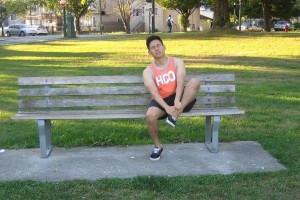Achilles tendinitis is an injury caused by the overuse of the Achilles tendon which is the band of tissues that connect the calf muscles located at the back of the lower leg to the heel bone.
Achilles tendinitis usually happens in runners who suddenly increase the intensity or duration of the run. It is also common in people who are middle-aged and are playing sports like basketball and tennis.
Achilles tendinitis can be treated with first aid care at home, but for a more serious Achilles tendinitis that causes raptures that require surgery. By enrolling in a first aid course, you will learn how to manage this condition.
Symptoms
Pain caused by the Achilles tendon begins as a mild ache experienced in the back of the leg or just above the heel after doing a sports activity or running. A more severe pain can be experienced after long running, sprinting and climbing stairs.

There is stiffness and tenderness experienced in the morning and will be minimized when doing some mild activities.
Achilles tendinitis can be caused by a repetitive or an intense straining of the Achilles tendon which is the band of tissues that is connecting the calf muscles to the heel bone. The purpose of the tendon is for walking, jumping, running, pushing up using the toes.
When the person ages, the structure of the Achilles tendon weakens, thus making it more susceptible to injuries especially people who occasional play sports games or a sudden increase in the strength of a running program.
Treatment and some home remedies
- Over-the-counter medications like ibuprofen or naproxen to relieve pain and inflammation.
- Do some physical therapy like stretching and strengthening exercises to promote faster healing.
- Putting a shoe insert or a wedge that elevates the heel and can relieve the strain as well as lessens the pressure on the Achilles tendon.
- Achilles tendonitis can be treated at home by self-care by applying the RICE method.
Rest – doing some activities that do not strain the Achilles tendon like swimming. For a more severe condition, the person needs to wear a walking boot and he/she can use crutches.
Ice – applying an ice pack to the tendon for fifteen minutes after doing an exercise or when there is pain in order to minimize swelling and pain.
Compression – wrapping or using a compressive elastic bandage in reducing swelling and movement of the tendons.
Elevation – by elevating the affected foot above the level of the heart in order to reduce swelling and the person can sleep in this kind of position.
Prevention
- By increasing the activity level, like if the person just begins an exercise, start slowly and gradually increasing the duration and intensity of the exercise.
- Avoiding activities that have excessive stress on the tendons, like running in the hill as well as doing strenuous activity. Perform warming up and exercise in a slow pace, and if there is pain, stop and have a rest.
- Wearing shoes that provide good cushioning for the heel since it reduces tension in the Achilles tendon.
- The calf muscles and the Achilles tendon should be stretched in the morning before and after an exercise for flexibility.